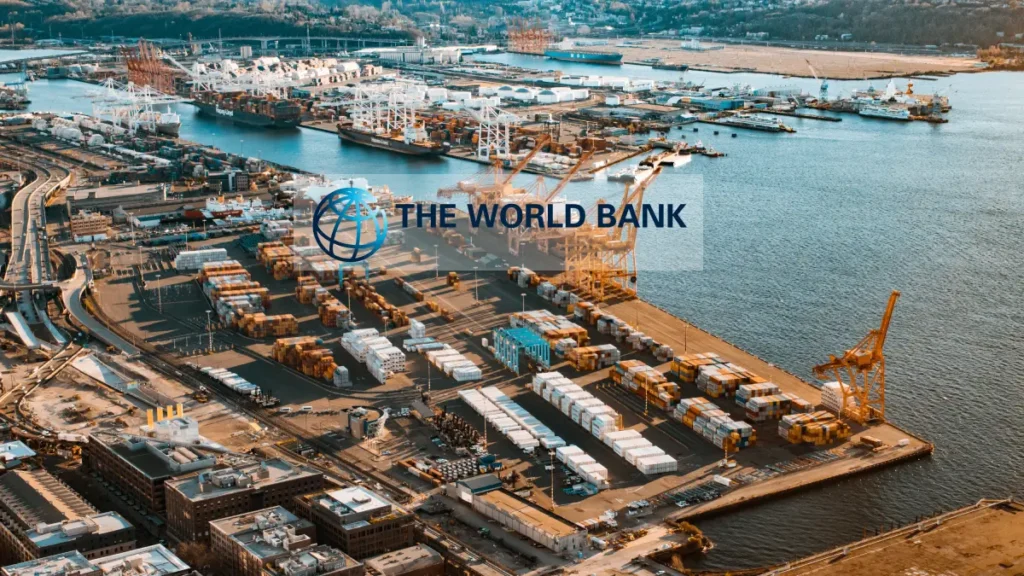A cautionary note has been sounded by the World Bank regarding the Global Economy outlook.
The World Bank suggests that the Global Economy is set to experience its poorest five-year growth period in three decades.
Anticipating a sluggish trajectory, it projects a mere 2.4% growth in 2024, attributing higher interest rates as a significant influence.
Moreover, lingering conflicts in Ukraine and the Middle East are poised to further impede global trade and investment, casting shadows on economic prospects.
Within the context of the Global Economy outlook, the World Bank noted that the robustness of the US economy is expected to result in a 2.6% growth for the previous year.
Indermit Gill, the chief economist at the World Bank Group, emphasized the persistent challenges, stating that near-term growth will be feeble, trapping many developing nations, particularly the poorest, in a challenging situation.
He highlighted issues such as soaring levels of debt and precarious access to food for nearly one-third of the population.
The Global Economy Outlook is further clouded by historically lackluster global growth and a sluggish pace in global trade, as expressed by Gill.
In the latest Global Economy Outlook, the twice-yearly lookahead has issued a warning, noting that the repercussions of the Israel-Hamas conflict have significantly elevated geopolitical risks.
The report highlights that attacks on vessels in the Red Sea, disrupting vital shipping routes, have amplified the likelihood of “inflationary bottlenecks.”
Global Economic Disparities and Concerns Due to Inflation and Borrowing Costs
With nearly two years of consistent increases in borrowing costs, inflation is approaching the 2% target in the US, UK, and Eurozone. Expectations for rate cuts are widespread for the upcoming year.
Higher interest rates in the world’s major economies not only affect local borrowing costs but also make borrowing more costly for poorer nations.
The World Bank expresses particular concern regarding the affordability of this situation for the world’s 75 poorest countries.
This aspect of the report reveals a disparity in recovery, indicating that wealthier nations are rebounding more effectively from the pandemic compared to their less affluent counterparts.
Within the framework of the Global Economy Outlook, this data underscores a significant challenge.
Global Economy Outlook: Income Disparities and Food Affordability
Mr. Gill projected, “By the conclusion of 2024, all advanced economies are expected to achieve a per capita income surpassing pre-COVID levels.”
Yet, he cautioned that in emerging economies, the average individual income may reach only 75% of the pre-COVID level. In the poorest countries, this figure could drop even further, potentially reaching as low as 66%.
A specific worry arises regarding the affordability of food for the world’s most impoverished individuals, fueled by last year’s 27% surge in rice prices, linked to India’s significant export restrictions.
Despite this concern, abundant supplies of other crops, such as grains, are expected to lead to a 1% decrease in average food prices this year.
Blinken Expresses Concern Amid Shipping Disruptions
During his ongoing tour in the region, US Secretary of State Anthony Blinken expressed political concern about escalating prices.
In a tweet on Monday, he highlighted the impact of the attacks, stating that they have disrupted or diverted almost 20% of global shipping.
Blinken emphasized how this disruption raises the cost and time associated with transporting essential items such as food, fuel, medicine, and humanitarian assistance.
This development occurs as central banks globally believe they are gaining control over the cost of living crisis.
China’s Economic Challenges Create Global Impact
China, the world’s second-largest economy, faces ongoing challenges as consumer spending reluctance contributes to falling prices.
Coupled with substantial debts in its troubled property sector, the economy is anticipated to experience a modest growth of just 4.5%.
This projection, below the government’s 5% target for 2023, would mark one of the lowest growth rates in decades.
Factors contributing to this slowdown include reduced foreign investments, along with long-term trends like an aging population and challenges in sustaining the rapid development pace of the past two decades.
Mr. Gill highlighted,
“The decelerating growth in China poses a headwind to other developed economies, particularly those heavily reliant on China as a major trade partner.”
The World Bank’s forecast indicates that the period spanning five years until the close of 2024 will mark the slowest half-decade of global economic growth in three decades.
Nevertheless, there’s optimism that this trajectory can be reversed with increased efforts from governments to foster investments. Especially from the private sector. Such investments are deemed crucial to address challenges such as climate change and the transition to sustainable energy sources.
